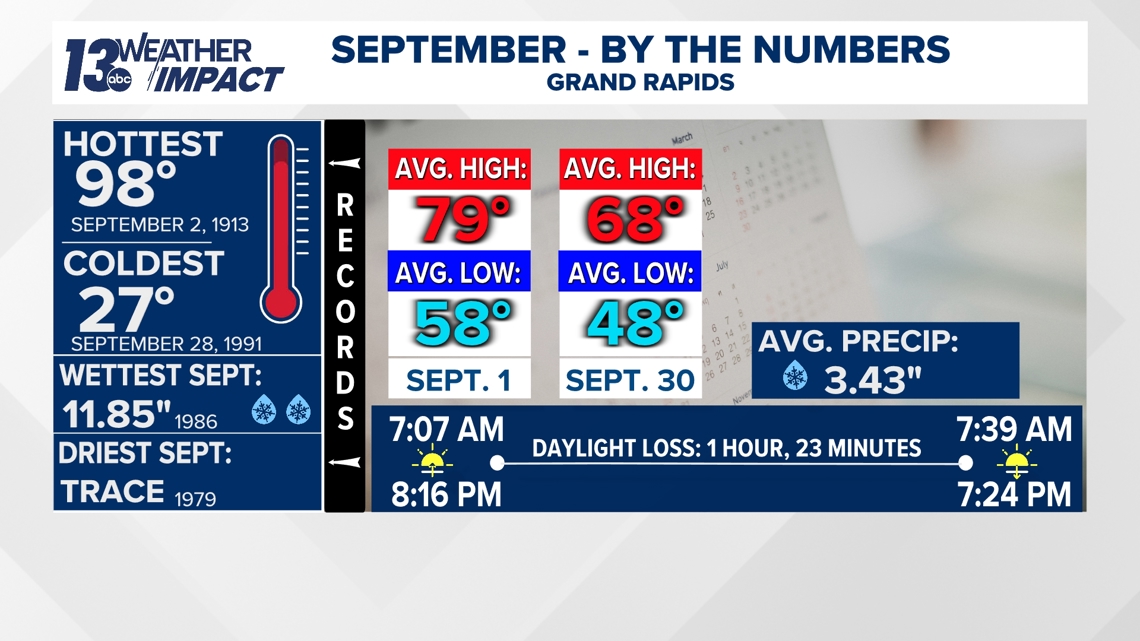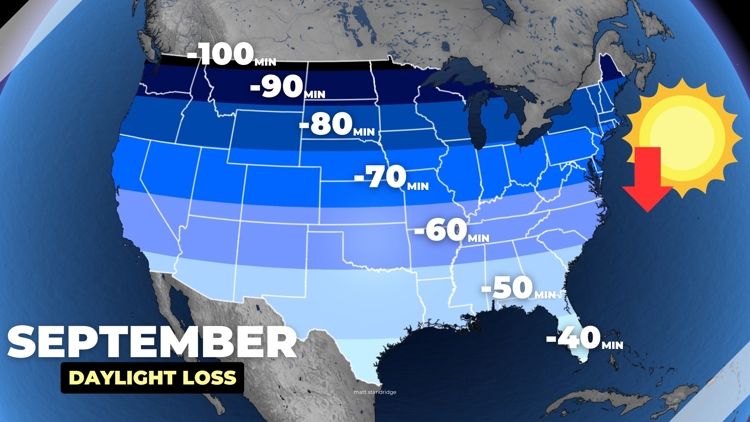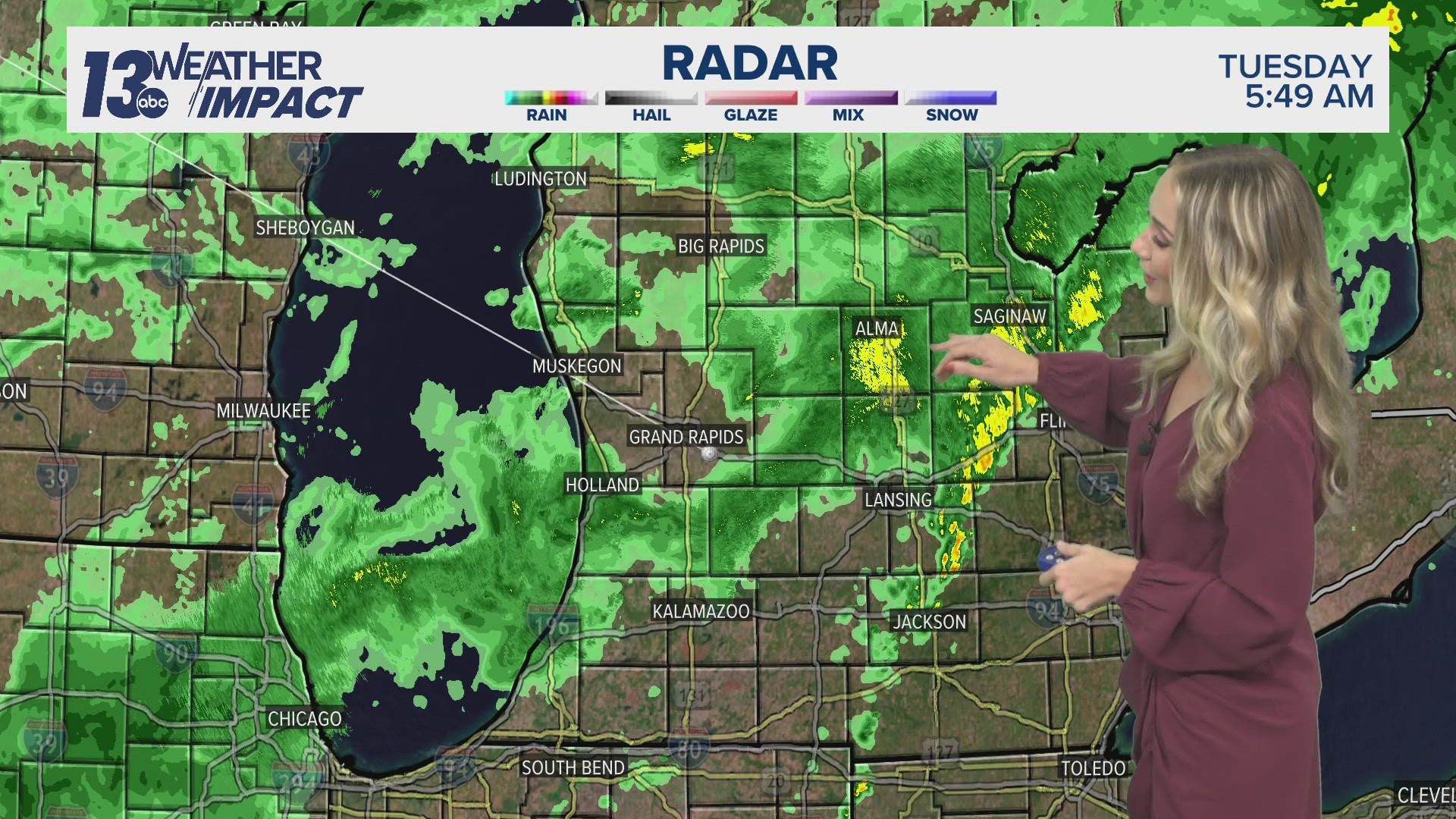GRAND RAPIDS, Mich. — The end of summer is approaching, with fall officially starting at 8:43 a.m. EDT on Sept. 22. Despite plenty of summer warmth this week, the transition to fall will eventually bring cooler days and nights, adding a crispness to the air as the leaves start to change color.
One key difference between September and the prior summer months is how quickly we lose daylight – the rate at which we lose daylight reaches its peak in September. In West Michigan, daylight decreases by roughly two minutes and fifty seconds per day throughout the month.
AMOUNT OF DAYLIGHT
On Sept. 1, sunrise in Grand Rapids occurs at 7:07 a.m. and sunset at 8:16 p.m., giving a total of 13 hours and 8 minutes of daylight. By Sept. 30, sunrise is at 7:39 a.m. and sunset at 7:24 p.m., a total of 11 hours and 45 minutes of daylight. Over the course of the month, West Michigan loses approximately 83 minutes of daylight.
Grand Rapids' last sunset at or after:
- 8 p.m. is Sept. 10
- 7 p.m. is Oct. 14
- 6 p.m. is Nov. 2 (last day of Daylight Saving Time)
The further north one goes from the equator to the North Pole, the more dramatic the loss in daylight becomes. Those who live within 40 miles of the U.S.-Canadian border will lose over 100 minutes of daylight in September, while parts of Alaska will lose over 250 minutes – over four hours – of daylight this month.

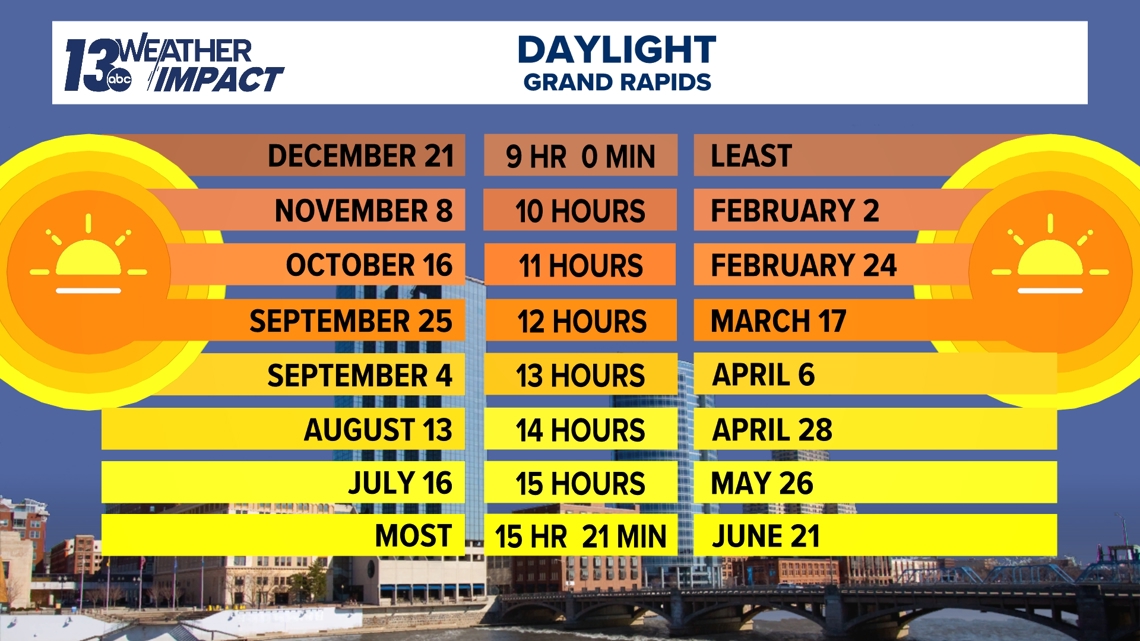
WHY THE RAPID LOSS?
The rate at which daylight increases and decreases throughout the year is not consistent. This is due to the tilt of Earth's axis along with its revolution around the Sun.
Toward the fall equinox in September, the tilt of the Earth’s axis causes the Sun’s path to shift quicker. This contrasts with the solstices, where the Sun’s position is more stable, leading to slower daylight changes. So, in September, this rapid loss peaks. Likewise in March, near the spring equinox, the gain of daylight is at its peak. The further north one travels from the equator, the more pronounced these changes in daylight will be.
Daylight will continue to slide off until the Winter Solstice, which falls on Dec. 21 this year.

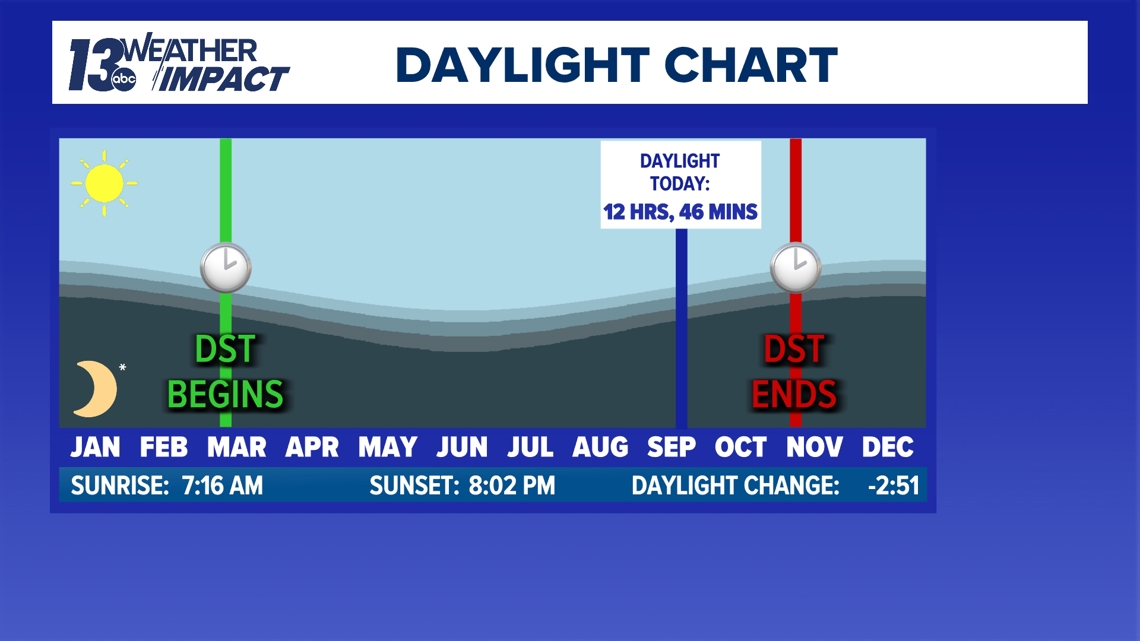
EQUILUX
The equilux occurs when there is an equal amount of daylight and darkness. It might sound like the equinox, but they’re not the same. The equinox is when the sun is directly above the equator, but due to factors like atmospheric refraction (how the atmosphere bends sunlight) and the size of the sun, the equilux usually happens a few days before or after the equinox. This year, the equilux will occur on Sept. 25.
SEPTEMBER BY THE NUMBERS

